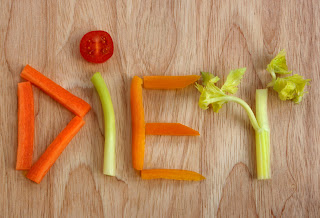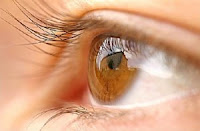Nothing cheers people up more than the weather turning warm! The coming of spring can be noticed all around, from ever shrinking piles of snow, to small green buds popping out on tree tips. The change in weather and environment also mean it is time to re-evaluate your skin care regiment. Changes made in preparation for winter’s harsh reality will not be suitable for the freshness of spring. Here is how you can make sure you put your best face forward as the world outside begins transforming from gray to green.
Hydration
As always, hydration is the key to youthful, vital skin. If you’ve been slacking on the old water consumption in favour of warm cocoas or hot lattes than it is probably time to step up your water intake. Not only can caffeinated keep you from getting your water quota, but they can also dehydrate you and your skin, even further. Getting into the habit now of consuming eight or more glasses of good quality water a day will help your skin be looking fabulous come warmer days.
Exfoliation
So last time you were at yoga class you happened to catch a glance at your shins while trying to breath into your pose and discovered to your horror that your legs were scaly and dry, or perhaps even worse, entirely reptilian. This can of course catch off guard if you haven’t been paying attention to what was going on under those leggings and winter boots. Although winter weather can be much to blame, slacking off on the sloughing off can also get you into trouble. Now is therefore the time to say good bye to those dry flaky bits with a little exfoliating magic. A good exfoliater won’t further dry out your skin but will merely help you get rid of the flaky look.
Loofa
While exfoliation might be great for getting rid of the dry flaky skin from your arms and legs, you may need to go a step further when it comes to your feet. When the skin gets dry and dehydrated, the bottom of the soles can be the worst sufferers. If, like most people, you’ve been ignoring the bottoms of your feet during the winter season it might be time to invest in a little pedicure operation. If you’d rather have someone else deal with this, then find a good natural spa and enjoy yourself. However, if you’d like to save a little money, then investing in a good loofa and scrubbing the feet after a long soak is your best bet. Once flip flop season rolls around you don’t want to be caught off guard!
EFAs
Yes, that’s right another reason to keep eating (or start eating) those essential fatty acids everyone’s on about. EFAs are really important when it comes to keeping your skin in good condition. EFAs were found in flax seeds, hemp seeds, or deep water fish like salmon, provide essential nutrients for your skin. These nutrients not only help to hydrate and plum up the skin, but help also to water proof the skin. EFAs help the body to maintain impermeability while providing the building blocks for healthy cells. So if you have been slacking on the skin care front, you can get your skin ready for spring with an early barbecue and some grilled salmon.
Vitamin AVitamin A has long been known to be an important component in skin care. Vitamin A is often found in night creams and prescription skin care products. Vitamin A has a proven ability to help fade out brown spots and aging spots and to smooth rough edges. Retinoids are essential to making the skin look and feel younger. Adding a few baby carrots to your afternoon snack will help provide you with some beta carotene a precursor to vitamin A.

Vitamin B3
Vitamin B3 is another skin enhancing supplement, which is often overlooked. Yet the truth of the matter is that vitamin B3 has been shown to significantly reduce redness and to boost hydration. So if you can’t seem to down enough water throughout the day to hydrate your skin, then try adding a B3 supplement to your regimen as well. Alongside fatty acids, B3 has been proven to strengthen the skin’s protective barriers. This vitamin can help keep irritants out while maintaining moisture on the inside. If this wasn’t enough it can also reduce and minimize dark pigmented spots.
Sun Screen
Ok so although it might not be beach weather just yet, wearing sunscreen everyday is crucial to keeping your skin young and healthy. A moisturizer with an SPF of at least fifteen is recommended by health and skin care professionals even during the winter months. As the warmer weather approaches it is even more essential to make sure your skin is protected. Although you may be hoping to get a head start on your summer glow, remember that a red burn is possible even in moderate weather. The lobster look is never appealing and you will only be adding skin damage to your list of skin woes. So, be responsible and put on the SPF. There’ll be plenty of time to soak up the rays and get a little colour soon enough.
Steam
A good sweat has long been a traditional remedy for a variety of ills, but it can also be a great way to detoxify the body and this includes the skin. If you’ve been suffering from skin eruptions or other skin disorders you may want to head to your local community centre or spa and spend a little time in the sauna to sweat it all out. If you are adverse to the public nature of some community steam rooms or saunas, then look into what sorts of hydrotherapy options your nearest spa might have. Sweating is the body’s way of getting rid of skin impurities. So if after all of these tips you still feel your skin could use a little revitalization then give this last one a try. Some people swear by it as a cure all for skin disorders
.jpg)
















